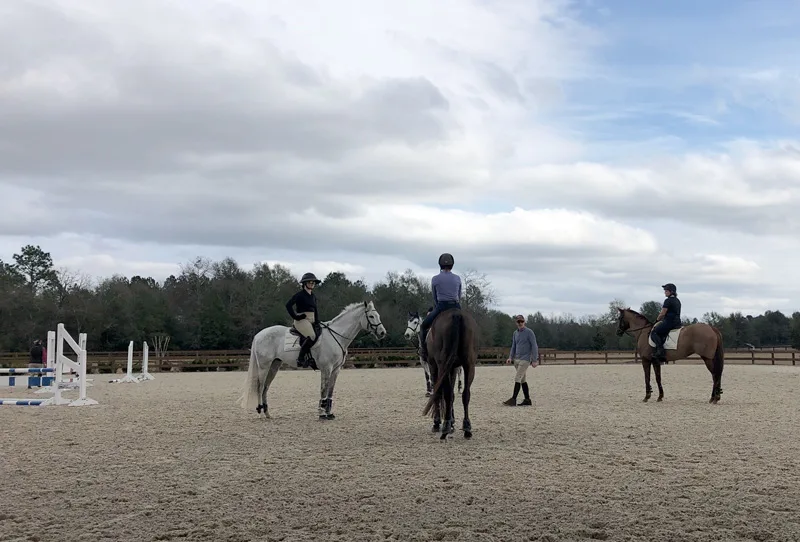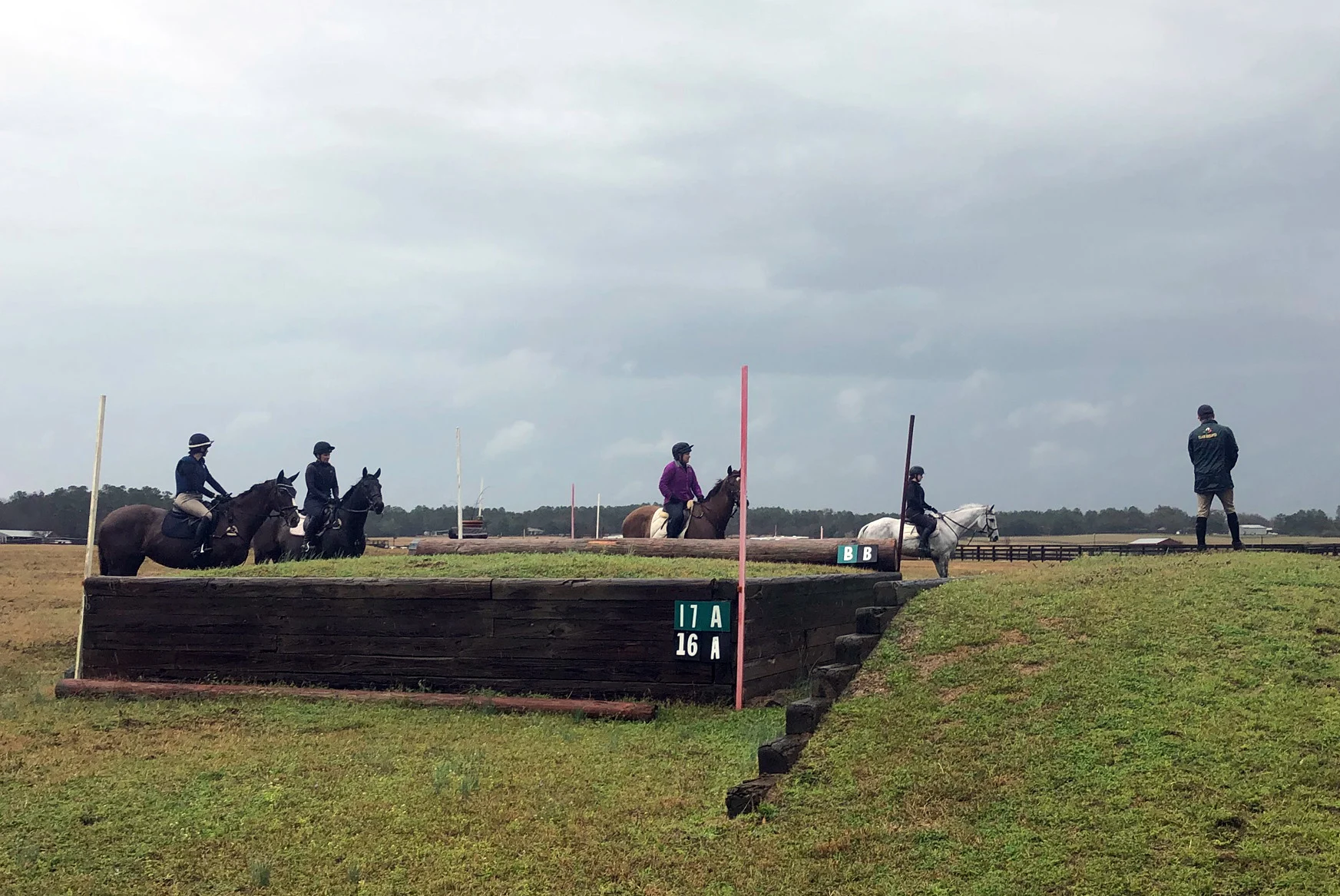Irish Olympian and 2018 FEI World Equestrian Games (North Carolina) individual and team silver medalist Padraig McCarthy brought his trademark humor and approachability to a two-day clinic held Feb. 12-13 in Aiken, South Carolina.
Day 1 began at Five Henry Stables for show jumping, with five groups ranging from novice to advanced. McCarthy has a great ability to make riders relax and feel at ease. Between sessions, you could catch him speaking with participants and sharing stories. He greeted each rider with a pat on the neck for the horse and some small talk for the rider. As each group entered the ring, McCarthy made an active effort to get to know each participant and make a connection with them.
McCarthy said his favorite part of teaching is to see the riders improve, and he loves to teach because he’s giving back to other riders. “I love lessons myself,” he said, so he likes to share his knowledge with others. “It becomes your legacy as you help people.”
When asked about advice to young riders or aspiring riders, McCarthy encouraged people to find a great rider and work for them. He acknowledged that the existence can be hard, but working as an equine professional is a privilege because of the chance to work with the horses.
For show jumping day, McCarthy began each session with a simple exercise of bending lines between verticals.
The three main takeaways were:
The Importance of One’s Track: McCarthy specified the number of strides to obtain between the jumps and allowed the riders to go ahead and ride the exercise. He set poles at various places near the jumps to encourage certain tracks as well. He kept the jumps low to begin with and gave his undivided attention to each rider during their ride through the exercise. He would softly speak to them as they rode through the exercise and was just as eager to praise them as he was to help them tweak their ride to improve the quality of the track they rode.
As each session progressed, the exercise remained quite simple, but a single bending line grew into a course with various related distances and a few single verticals. He continued to focus on each rider’s track to the jumps. He wanted riders to have a plan and ride the plan they had chosen. In essence, you had to commit to something!
ADVERTISEMENT
A Positive Canter: McCarthy wanted riders to have a canter that was like a “spring”—a canter they could adjust as needed and for it to have energy within it, not a weak, slow, disjointed canter. He wanted quality within the gait and explained, “Don’t protect a mistake by going too slow.”
He further explained, “[It] gets into a vicious circle” if you don’t address problems or challenges. When a rider would have the wrong lead or would be cross-cantering, McCarthy encouraged them not to not panic and not to be afraid to counter-canter a turn if necessary and to calmly fix the cross-canter.
McCarthy reiterated the importance of inside leg to outside rein and wanted riders to avoid using too much hand. He encouraged them to use their leg and body position to work on the canter that they wanted. “Don’t shorten the canter while discussing contact,” he told one rider.
He added, “My hand is a dialogue,” as he encouraged the participants to push their horses into a connection with their leg. In addition, he encouraged riders to sit in the tack throughout their turns to help rebalance their canters.
Don’t be afraid to use your voice: Many times, throughout all of the clinic groups, McCarthy encouraged riders to use their voice and say, “Whoa.” He explained that not only is it relaxing to the horse, but it’s also a way to make the rider remember to take a breath! As riders began to use their voices, the horses visibly responded as they jumped the exercises.
For Day 2, riders went to Full Gallop Farm to practice on the cross-country course.
Carrying over from the day before, McCarthy focused on the importance of the quality of canter and confidence for both the rider and horse.
ADVERTISEMENT
A Quality Canter: McCarthy encouraged riders to have a positive canter and enough pace to jump around. As he explained, “You have to be purposeful in cross-country. It was designed to be ridden positively.”
He added that you should ride through the cross-country phase with a bit of “fire in your belly.” Throughout each session, McCarthy asked participants to ride more forward but not to have a strung out canter. He encouraged riders to add leg and go! Some riders were not as comfortable riding forward with a bigger stride, but he was supportive and encouraging with his coaching throughout the obstacles, whether they were jumping down a bank, over a corner, or through the water complex.
Confidence: As the preliminary group walked towards the coffin jump, McCarthy asked the group if their horses were good with holes in the ground. One rider responded that they were fine as long as she wasn’t IN the hole. McCarthy chuckled. “They’re called coffins, so don’t look in them!” he said, which gave the group a laugh.
For each obstacle, McCarthy would check with each rider to make sure they were comfortable jumping the type of jump, the size, etc. If needed, he would adjust the exercise for an individual. He obviously cared about the success of each participant and wanted everyone to have a positive learning experience. McCarthy did this during Day 1 as well and never put pressure on anyone to make them do something they were uncomfortable with.
An example of this was when a horse didn’t want to jump down a bank for the first time. McCarthy had the horse stand at the top of the bank, and he “trotted” down the bank on foot to show the horse where he needed to go. The horse eagerly followed when asked to do so. There was never any pressure put on the horse—only time and an explanation given.
At the end of two days, riders came away with plenty to think about. Having a plan, maintaining a quality canter, and being empathetic to your horse will ultimately lead to success in the sport.

















